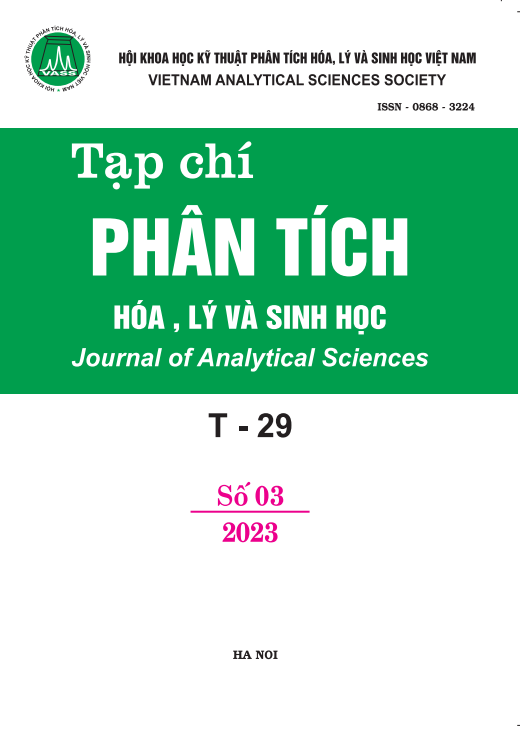STUDY ON THE ACCUMULATION POTENTIAL OF COPPER FROM SOIL AND HEALTH RISKS WHEN USING SOME TYPES OF HERBS PLANTED IN POLLUTED SOIL
Abstract
In this study, the accumulation levels of copper in the biomass of certain herbs, including oregano, celery,
gotu kola, and purple perilla when grown on contaminated copper soil, were investigated. The results
showed that copper had the potential to accumulate in plants, with the highest accumulation in the roots,
decreasing in the stems and leaves. When grown in copper contaminated soil ranging from 50 to 1500 ppm,
the accumulation of copper decreased in the following order: oregano roots (8.28 ÷ 103.05 ppm) > purple
perilla roots (8.14 ÷ 66.98 ppm) > gotu kola roots (6.10 ÷ 39.95 ppm) > celery roots (5.40 ÷ 31.74 ppm) >
oregano stems + leaves (2.59 ÷ 24.02 ppm) > purple perilla stems + leaves (3.56 ÷ 16.45 ppm) > gotu kola
stems + leaves (3.62 ÷ 16.74 ppm) > celery stems + leaves (1.75 ÷ 7.16 ppm). Health risk indices for adults
and children when using these herbs were also assessed. The THQs (Target Hazard Quotients) for copper
increased in the following order: celery < purple perilla < oregano < gotu kola, and THQs for children
were higher than those for adults.

